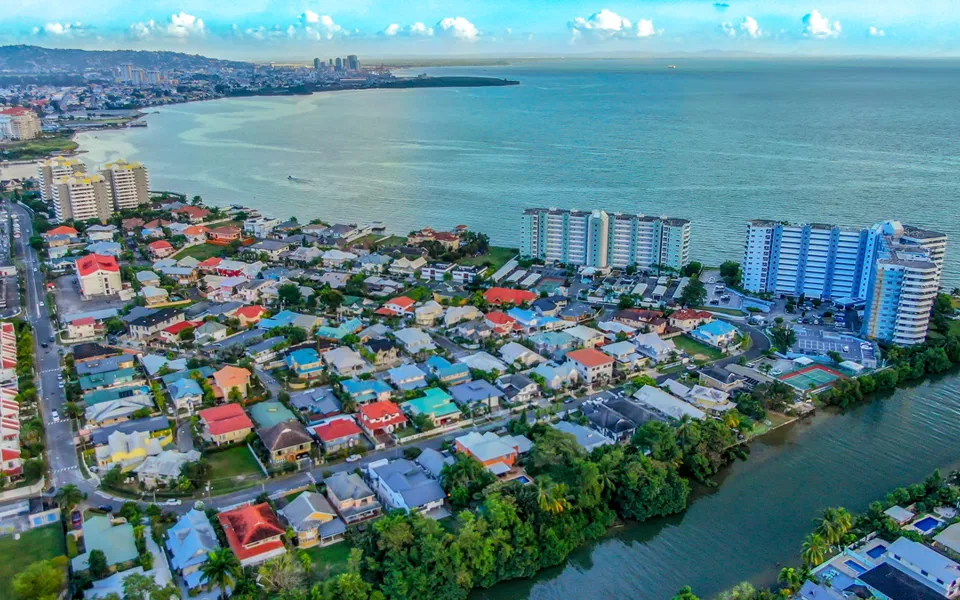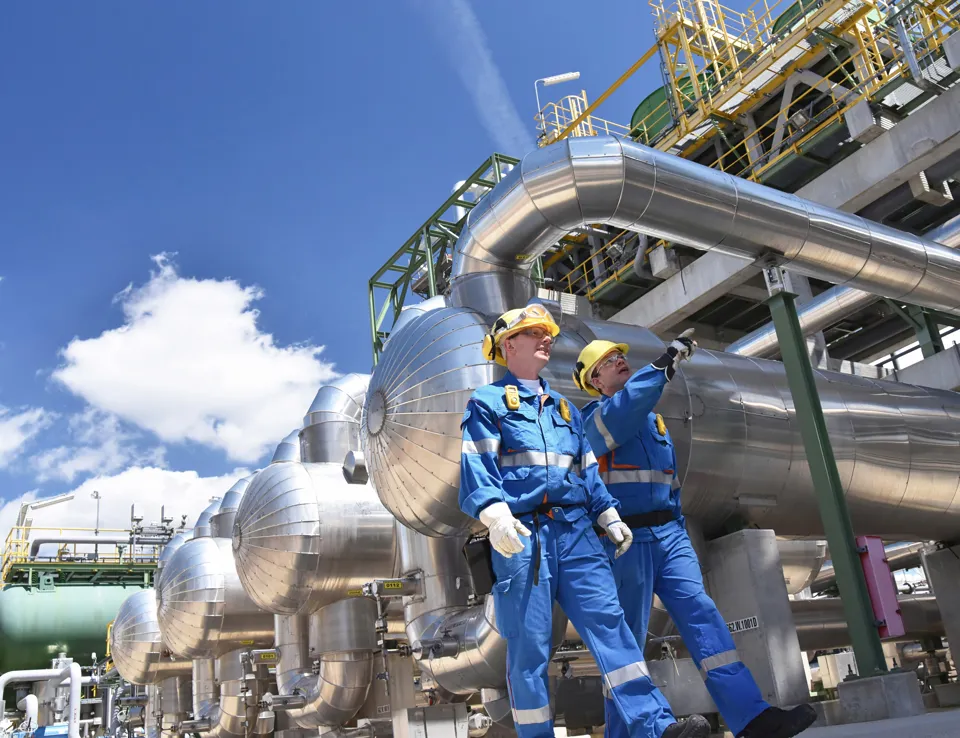
Accelerating hydrogen development for sustainable island states
23 Feb 2024
Ricardo works with multiple island states across the globe, providing expert energy consulting services to drive a safer, cleaner, more sustainable world. One of the most recent island states with which we have engaged is Trinidad and Tobago. Jay Nyathi, consultant in renewable fuels in our energy decarbonisation team, had the privilege of discussing policy measures towards accelerating hydrogen development in Trinidad and Tobago as part of the 2024 Energy conference organised by The Energy Chamber of Trinidad and Tobago.
Here, Jay shared that for states and island states considering adopting hydrogen, regulations and policy frameworks in hydrogen project funding, infrastructure development, sectoral decarbonisation, taxation, hydrogen training and accreditation are crucial levers in stimulating growth in the supply chain.
Ricardo has a long and successful track record in supporting island states with energy transition. Tell us more.
Jay: “Ricardo has been successfully advising island states on their energy transition: looking at power and regulation around grids and renewable energy. For more than two decades, Ricardo has been working with clients across the hydrogen value chain. Our hydrogen capabilities are very well aligned to the needs of island states because our key expertise is focused on single point strategies, pre-feasibility consultancy, and safety and training. Leveraging our hydrogen capability with our long track record as established trusted partners means that we are well placed to act as advisors to island states to help them take the real opportunities that hydrogen can offer them in relation to energy transition and decarbonisation.”
During the Trinidad & Tobago Energy Conference you talked of the importance of an enabling environment for hydrogen. Can you explain more?
Jay: “Yes! Accelerating hydrogen depends on major regional policies, particularly those around hydrogen funding frameworks and those that help create an enabling environment: such as regulations around fostering the correct infrastructure to support hydrogen.”
“If you look at the EU’s approach, it mandates certain sectors like transport or manufacturing to move, which should drive them to take off. For example, the EU ETS, which is an EU emissions trading scheme, will help drive decarbonisation as well as the Alternative Fuels Infrastructure Regulation (AFIR) which sets mandatory deployment targets for electric recharging and hydrogen refuelling infrastructure for the road sector, for shore-side electricity supply in maritime and inland waterway ports, and for electricity supply to stationary aircraft. The Carbon Border Adjustment Mechanism (CBAM), which will affect nations and states outside the EU, is another policy example. Trinidad and Tobago exports ammonia and methanol to Belgium and France which are currently made using fossil fuels, and so there is an opportunity to green that industry with hydrogen to meet EU border requirements.”
“At the conference, it was really interesting hearing from a speaker who works at the state- owned national energy organisation that is driving the transition towards hydrogen. They have already started doing some work in this concept of enabling environment.”
What particular challenges do island states face if they want to develop a hydrogen economy?
Jay: “From our work supporting island states, we are well versed in understanding their specific challenges. To produce green hydrogen, you need three things: water, land space, and renewables. If you want to produce hydrogen as an island state, you might thrive, being surrounded by water; however, you are massively challenged by not having land space for electrolysers and by the availability of renewables. Also, the island state may not have easily accessible renewables because they need to be offshore and then if they are offshore, then other factors come into play such as: will siting wind turbines or tidal power systems interfere with natural ecosystems or features which are essential to the island’s tourism trade, and so on. So, there are competing considerations and factors. We always have to ask ourselves the question: whether we are able to satisfy all three factors or are there inevitable trade-offs to be made, and if so, will all key stakeholders – government, authorities, industry, the public - accept them?”
“Another consideration is the electricity system itself. Is it still relying on gas, diesel or other fossil fuels? If so, there's a competition there between decarbonising existing electricity supplies and producing green hydrogen. There’s always cost benefit analysis that needs to be undertaken, and hydrogen should be made when there’s a clear demand and one cannot decarbonise without hydrogen.”
“In the case of Trinidad and Tobago, there are existing methanol and ammonia industries. Those cannot be decarbonised unless the hydrogen input to those processes is green, so there's no option there for them, currently. The question becomes: how do we get the hydrogen? If an island state manages to tick the three boxes – water, space, renewables - then they can manage to make the hydrogen.”
“Sometimes in order to look at the low hanging fruit, island states might have to consider what the authorities in an island state might consider as unpalatable choices, such as importing hydrogen. In my opinion, importing green hydrogen from the likes of Chile, a country which will be producing hydrogen at very lower cost, is a very realistic option. Chile has all the natural advantages to become a hydrogen superpower: the country has massive deserts, vast land space, a lot of renewables - especially solar - and can desalinate water from the ocean.”
“The harder it is to produce hydrogen, the more expensive it is. For an island state, therefore, the economics might stack up better for you to import green hydrogen rather than to produce domestically. This could well be the most pragmatic decision complimented by domestic production.”
“Whether in relation to policy, regulatory or technical aspects, at Ricardo we understand the complexities and what needs to be considered to be able to help island states start to build a hydrogen economy.”
Ricardo is renowned for being technology ‘agnostic’ or independent. Why is this an advantage for island states on the hydrogen development journey?
Jay: “Each island state has unique characteristics and factors in relation to its national energy mix. At Ricardo, however, we are able to tackle all those things because of our deep knowledge of and expertise in renewables implementation, hydrogen implementation and general energy systems.”
“We've helped with a lot of integrated resource plans, which involves modelling the entire energy system and understanding the supply and demand of electricity and all the different energy vectors in the system. We combine wide expertise in energy systems with deep domain knowledge of hydrogen – something that very few other engineering consultancies have.”
“Crucially, we are always focused on what is the right solution for a particular client, based on all the underlying factors. This could mean that we actually say to a client that hydrogen is not the right solution for them, and instead they should be looking to implement another solution, like electrification instead.”
“We can also go down and zoom into each sector and be able to give expertise and understanding, because we are not tied to one particular technology. For us, it’s important to do the right thing for the client, not try to say that hydrogen is some kind of silver bullet.”
There are two major emerging funding models for hydrogen development. What are the key differences?
Jay: “The European Union has taken a two-pronged approach around domestic production and a focus on imports. Whereas the US and Australia have really just focused on creating internal economies.”
“The European Commission’s REPowerEU plan, which supports the green transition by reducing energy waste, producing clean energy, and diversifying energy supplies projects that 10 megatons of hydrogen need to be produced domestically and another 10 megatons need to be imported. This has prompted the signing of a number of memorandums of understanding: for example, between Germany and Namibia, for a flagship hydrogen project worth about 10 billion USD, which will see hydrogen being exported to Germany from Namibia.”
“The US has taken a different approach. The Inflation Reduction Act is geared towards stimulating domestic production for domestic use and giving US-based firms credits and subsidies to produce hydrogen domestically for domestic use. The focus is almost entirely inward-looking, perhaps understandably given the natural advantages for hydrogen production in the US.”
“Through its Head Start programme Australia is focusing on large-scale domestic production and creating a really strong domestic industry, with a significant export capacity.”
“Interestingly, a lot of global South countries, particularly in Africa and South America have been envisioned as net exporters, while certain countries in Asia and the continent of Europe in general have been envisioned as net importers.”
What do you think is the ultimate Ricardo value-add around hydrogen for our clients?
Jay: “The bottom line is that all Ricardo consultancy is entirely fact-driven and evidence-based. We really focus on our client’s best interests from a techno-economic perspective, and ultimately we also are able to draw on various fields of knowledge. That could be power systems or networks. However, it could also be: life cycle assessments, policy and regulation, and then also how transport sectoral considerations apply to hydrogen production or vice versa. At Ricardo, we're able to look at the whole value chain from production to consumption.”
Find out more
- For any questions or to discover how Ricardo can support you get in touch
- Hydrogen consultancy services
- How Ricardo enables islands to be more sustainable
- The Carbon Border Adjustment Mechanism





 Follow Ricardo Energy and Utilities for regular updates
Follow Ricardo Energy and Utilities for regular updates




